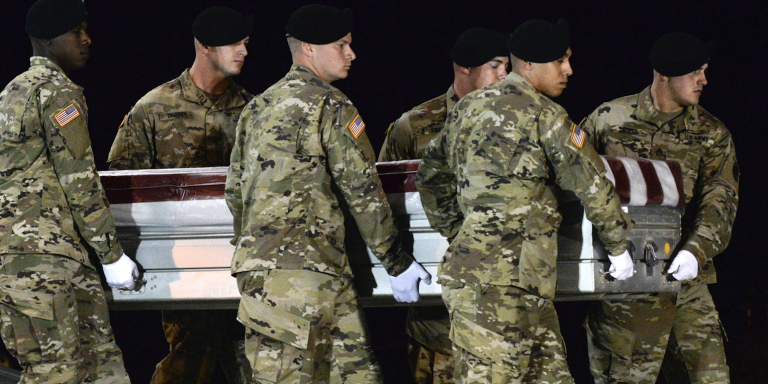INTELBRIEF
February 21, 2018
TSC IntelBrief: What Local Fights Mean for Global Terrorism

- A February 18, 2018, New York Times article focused on the ambush and deaths of United States Special Forces soldiers in Niger.
- The deeply-researched article examined the larger issue—the scale of U.S. military counterterrorism operations around the globe.
- Nearly all the U.S. military counterterrorism operations rest on a 2001 Authorization for the Use of Military Force (AUMF) that has been stretched beyond legal and practical recognition.
- Because terrorism is a global phenomenon with intensely local ‘solutions,’ the U.S.’ heavy emphasis on military support to local troops has it trapped in countless conflicts.
While the term ‘global war on terror’ is no longer used, its sentiment remains. For over 16 years, the United States has been fighting a war with little public awareness and no political debate. The October 4, 2017 deaths of four U.S. Green Berets in Niger created a brief firestorm of political maneuverings and public interest that quickly faded, a pattern that has persisted for more than a decade and a half. Yet the issues underlying each specific instance of U.S. troops dying in remote places while on counterterrorism and training missions remain the same, to include the reason the troops are there in the first place.
The full text of the legal authorization for essentially all U.S. military operations since 2001—excluding the 2003 Iraq war, which was authorized by a different resolution—is as follows: "That the President is authorized to use all necessary and appropriate force against those nations, organizations, or persons he determines planned, authorized, committed, or aided the terrorist attacks that occurred on September 11, 2001, or harbored such organizations or persons, in order to prevent any future acts of international terrorism against the United States by such nations, organizations or persons."
The 2001 Authorization for the Use of Military Force (AUMF), signed 7 days after the September 11 attacks, has been stretched beyond all legal and practical recognition, authorizing U.S. military operations in recent years from Syria to Niger. While in some places, the local terrorist group might be affiliated with al-Qaeda, the group behind the September 11 attacks, it more than strains credulity to argue that these local groups ‘planned, authorized, committed, or aided the terrorist attacks that occurred on September 11, 2001, or harbored such organizations or persons.’
The deaths of the four Green Beret soldiers in Niger highlight not just the geographic scale of U.S. military counterterrorism operations but also the scope of these operations. The Pentagon tends to classify these missions as ‘train and advise’ which is true, but it is not the whole truth; U.S. military personnel are fighting alongside local partners to a degree many in the U.S. would find surprising. The refusal to classify combat operations as exactly that, combat, is a practice of all U.S. administrations since 2001, as a way of minimizing the full cost of these missions. As the local conflicts worsen—which they have in almost every area where U.S. military ‘advisors’ are fighting, the risk of more combat deaths increases—a steady AUMF drift. Additionally, these missions, to include the largest one of all, in Afghanistan—have no time limits. Because the U.S. focus on addressing the local conflicts is overwhelmingly military, as opposed to diplomatic, the underlying causes aren’t addressed, and these missions become endless, as there can be no satisfactory outcome.
.
For tailored research and analysis, please contact: info@thesoufancenter.org
[video width="960" height="540" mp4="https://thesoufancenter.org/wp-content/uploads/2018/02/Final-Edit-1-135.mp4" poster="https://thesoufancenter.org/wp-content/uploads/2018/02/Screen-Shot-2018-02-21-at-13.43.14.png"][/video]